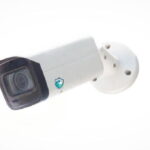Table of Contents
Dealing with ADT door sensor false alarm can be frustrating and alarming (no pun intended). But false alarms, especially from door and window sensors, are common. In fact, according to research, over 94% of all security system alarms turn out to be false alarms.
I learned this the hard way after an embarrassing false alarm in the middle of the night – set off by my pet cat! After calming my nerves, I investigated why motion detectors so often misfire.
I discovered issues like poor positioning, weather, interference, and even creepy crawlers can trigger false sensor alarms. Although a nuisance, these “cry wolf” situations are preventable.
The good news is that with some troubleshooting and preventative measures, you can greatly reduce false alarms from your ADT door and window sensors.
In this post, we’ll cover:
- Common causes of false door alarms and how to troubleshoot them
- Tips to prevent false alarms from occurring
- What to do when you experience a false alarm
- Consequences of frequent false alarms
- How to reduce false alarms from your ADT system
Let’s dive in.
What Causes ADT Door Sensor False Alarm?
ADT door and window sensors work by generating a signal when the door or window is opened. But there are a number of things other than an intruder that can trigger these sensors unintentionally:
- Drafts and Air Currents
- Pets or Insect Motion
- Doors/Windows Not Properly Closed
- Sensor Malfunction or Faulty Equipment
- Interference or Technical Issues
- Weather Conditions
Drafts and Air Currents
A breeze passing over the sensor can mimic the vibrations of an opening door or window and trigger the alarm. Areas near vents, fans, and AC units are especially prone to drafts.
Pets or Insect Motion
Your furry friends or crawling insects can unintentionally set off motion detectors if they get too close. Pet hair and spider webs near the sensor can also interfere with signals.
Doors/Windows Not Properly Closed
If a door or window doesn’t latch completely, it may slightly open once armed, triggering the alarm. Loose fittings can allow vibrations or air currents to cause movement.
Sensor Malfunction or Faulty Equipment
Like any electrical device, sensors can malfunction over time. Aging, loose wirings, corrosion, or physical damage can lead to false alarms.
Interference or Technical Issues
Wireless systems are susceptible to interference from other devices. Nearby electronics, low batteries, or wireless dead zones can disrupt signals.
Weather Conditions
Humidity, extreme temperatures, and storms may affect sensor function. High pollen and dust levels can also interfere with motion detectors.
Now that you know what causes false door alarms, let’s go over some tips to prevent them from happening in the first place.
Tips to Prevent False Alarms from ADT Door Sensors
Taking some proactive measures can greatly reduce false alarms from your ADT security system sensors:
Proper Installation and Placement
Sensors should be securely mounted, aligned properly, and placed away from vents, fans, and other air current sources. Optimal placement varies based on sensor type.
Adjust Motion Sensor Sensitivity
Detectors with adjustable sensitivity should be set to avoid minor movements while still detecting intruders. This may require some trial and error testing.
Use Pet-Immune Sensors
Specialized pet-friendly motion detectors ignore movements under a certain size to avoid Fido false alarms.
Train Users on Arming/Disarming System
Make sure all users know how to properly arm and disarm the system. Post instructions and set delay times to avoid accidents.
Frequently Test the System
Regularly test door, window, and motion sensors to verify functioning. Check the batteries and connections as well.
Ensure Doors/Windows are Shut Tight
Prior to arming the system, double check that all doors, windows, and other openings are fully closed and latched.
By following these tips, you can greatly reduce the chances of experiencing a false door alarm. But what should you do if one still occurs? Let’s go over your next steps.
Troubleshooting False Alarms from ADT Sensors
When your ADT alarm is unexpectedly triggered, use this process to troubleshoot and address the issue:
Verify the Source of the Alarm
Check the system’s control panel or mobile app to identify which sensor was tripped. Walk through the property and inspect windows and doors.
Check for Drafts, Pets, Weather Issues
Look for open windows, circulating fans, pets moving around, storms, or other factors that could set off motion or door sensors.
Inspect the Sensor and Door/Window
Check that sensors are still securely mounted without any visible damage. Ensure doors and windows are properly shut and latched.
DIY Fixes
You may be able to resolve issues like low batteries, adjusting motion sensor range, securing loose wiring, or cleaning sensors.
Contact ADT Support
Describe the issue and troubleshooting steps you’ve tried. An ADT representative can provide sensor troubleshooting advice and solutions.
Request a Professional Service Call
For ongoing false alarms or malfunctioning equipment, an ADT technician can inspect, repair, or replace faulty sensors and other system components.
By systematically addressing sensor false alarms, you can get to the bottom of what’s causing them and prevent recurrences. But if left unchecked, frequent false alarms can lead to some negative consequences.
Consequences of Frequent False Door Alarms
While the occasional false alarm may be unavoidable, repeated unwarranted alarms can cause some issues:
Permit Problems and False Alarm Fines
Many municipalities limit false alarms and impose fines for excessive occurrences. You may also have to pay ADT false alarm fees.
Police May Stop Responding
If officers are repeatedly called out to false alarms, they may stop responding to alarm triggers from that location.
Monitoring Fees May Increase
ADT and other security companies sometimes raise monitoring rates for accounts with chronic false alarm problems.
Nuisance for Community and Neighbors
Frequent alarming can disturb neighbors, hurt real emergency response times, and strain community resources.
That’s why it’s in your best interest to minimize false door alarms as much as possible. Let’s wrap up with some tips on reducing them from your ADT system.
How to Reduce False Alarms from Your ADT System
Here are the top ways to limit the number of false alarms from your ADT security setup:
- Proper installation and placement when setting up the system and sensors initially.
- Train users on arming and disarming procedures to avoid mistakes.
- Test frequently and change batteries to keep sensors in top shape.
- Adjust motion sensor settings like sensitivity to avoid minor triggers.
- Add video verification to visually confirm alarms before dispatch.
- Repair or replace faulty equipment like malfunctioning sensors.
- Work with ADT to evaluate your system and optimize configurations.
- Use pet-immune sensors to prevent furry friend false alarms.
With some diligence and troubleshooting, you can keep false alarms to a minimum and have confidence in your ADT security system.
Reach out to their support team for help addressing persistent issues.
Summary of Key Points:
- False door alarms can be caused by drafts, pets, sensor faults, weather, and other factors.
- Proper installation, sensor settings, user training, and frequent testing can prevent many false triggers.
- Inspect sensors, check for environmental issues, try DIY fixes, and contact ADT to troubleshoot alarms.
- Excessive false alarms can lead to fines, police non-response, and higher monitoring costs.
- Adjusting sensors, training users, testing frequently, and working with ADT can reduce false alarms.
With the right strategies, you can keep your ADT system running smoothly and avoid frustrating false alarms. Confidently secure your home knowing the alarm will be there when you really need it.
| Cause | Prevention |
|---|---|
| Drafts and air currents | Proper sensor placement away from air currents |
| Pets and insect motion | Pet-immune sensors, adjusted motion sensitivity |
| Doors/windows not latched fully | User training on arming with doors/windows closed |
| Faulty or malfunctioning equipment | Frequent testing and battery changes |
| Interference and wireless dead zones | Professional installation, work with ADT on placement |
| Weather issues like humidity | Adding weatherproofing, clearing dust |
| Consequence | Solution |
|---|---|
| False alarm fines | Reduce alarms through preventions and system adjustments |
| Police non-response | Verify alarms before dispatch, add video confirmation |
| Increased monitoring fees | Work with provider to optimize system and reduce false alarms |
| Disturbing neighbors | Keep sensors well-maintained and in proper locations |
Here are some tips to help prevent false alarms from your ADT door sensors:
- Install door and window sensors properly so they don’t get tripped accidentally. Follow the included directions carefully.
- Make sure doors and windows are fully shut before arming the system. One small gap can set off the sensor.
- Adjust motion sensor sensitivity so it detects people but not small pets. Too high sensitivity increases false alarms.
- Use pet-immune motion detectors that ignore movements below a certain size. This prevents false alarms from pets.
- Keep sensors clean and dust-free so nothing interferes with their signal. Check for spider webs, pet hair, etc.
- Replace low batteries immediately so sensors keep working properly without disruptions.
- Train everyone to use the system properly. Post arming/disarming instructions. Set entry and exit delay times.
- If issues persist, have an ADT technician inspect the sensors and system for faults, interference, or misconfigurations.
- Add video verification so alarms are visually confirmed, preventing false dispatches.
With proper use and maintenance, your ADT security system will be a reliable guardian against intruders. By minimizing false alarms, you prevent disruptions and keep your home securely protected
FAQs
What Can Cause A Motion Sensor To False Alarm?
Motion sensors used in home security systems like ADT can be triggered unintentionally by a few different things:
- Pets – Dogs, cats, and other household pets that are over the weight threshold can set off motion detectors if they wander into range.
- Drafts & Air Currents – Fans, open windows, vents, and AC units can create air currents that move curtains or other light objects which tricks the motion sensor.
- Insects – Bugs crawling on the lens, cobwebs blocking the sensor, or nests inside can all lead to false alarms.
- Improper Installation – If the motion detector is misaligned, not securely mounted, or positioned where outside traffic is in view, it may falsely trigger.
- Extreme Temperatures – Heat waves or frigid temperatures outside the operating range of the sensor can cause unusual readings.
- Wireless Interference – Other devices using the same frequency band as wireless motion detectors can disrupt signals.
- Sensor Malfunction – Faulty sensors, dead batteries, loose wirings, or damage can lead to inaccurate alarm triggers.
So in summary, motion sensors can be unintentionally set off by pets, air currents, insects, installation problems, weather, wireless interference and malfunctions. Selecting proper locations and adjusting settings can help avoid false alarms.
How Do You Reset The Adt Sensor?
Here are the steps to reset an ADT sensor that has triggered a false alarm or is malfunctioning:
- At the control panel, enter your master code to disarm the system if it is currently armed.
- Locate the problematic sensor on the control panel or mobile app sensor status list.
- Trigger the sensor again by opening the door/window or walking past motion detector.
- Press the reset button on the control panel while sensor is active to clear any faulty readings.
- Test the sensor again and ensure the false alarm condition is resolved.
- If issues persist, replace batteries or contact ADT support for sensor replacement.
Resetting clears any false signals and re-synchronizes the sensor. But frequent resets indicate an underlying problem needing correction.
What Is The Most Common Cause Of False Alarms?
The most common cause of false security alarms, accounting for around 35-40% of false dispatches, is unintentional activation by an authorized system user.
This includes accidentally triggering the panic button, entering codes incorrectly, arming with doors/windows still open, and similar user mistakes that are not actual emergencies.
Other leading causes of false alarms include:
- Equipment malfunctions at around 15-20% – Faulty components like bad sensors triggering incorrectly.
- Installation errors around 10-15% – Sensors positioned incorrectly during initial setup.
- Environmental factors like storms, insects, or extreme temperatures make up 5-10% of false alarms.
So human error by those with access to the system ends up being the single biggest factor in false alarm activations and police dispatches.
Can Adt Sensors Be Hacked?
While no system is completely immune from hacking, ADT sensors have relatively robust security:
- Sensors use encrypted wireless signals to communicate with the control panel, protecting against signal interception.
- Without the proper equipment, it is extremely difficult to spoof sensor data or override alarms remotely.
- Sensors lack any kind of external access port or interface that would allow unauthorized access or control.
- Attempted system hacking would trigger an alert to the ADT monitoring center.
So realistically, ADT sensors themselves cannot be hacked remotely to disable them or trigger false alarms.
However, some hacking at the control panel is theoretically possible but very difficult to pull off. Overall, ADT systems have quite reliable security against external hacking attacks.
How Do You Trick A Door Sensor?
While we don’t recommend doing this, here are a few dubious methods some use to try and trick or bypass a security system’s door sensor:
- Placing a powerful magnet near the sensor can mimic a closed door and prevent triggering.
- Wiring an external switch or relay to temporarily disrupt the sensor circuit when activated.
- Covering the sensor contacts with aluminum foil or another conductive material to bypass the open/closed circuit.
- Using radio frequency signal jamming to block sensor communication with the control panel.
- Swapping the door sensor for a dummy look-alike that does not actually function.
Of course these methods would disable a door sensor and compromise security, making them a very bad idea.
Exceptions might include testing during installation or troubleshooting. But intentionally circumventing a sensor permanently defeats its purpose in protecting a home.
Why Does My Door Sensor Keep Beeping?
If your ADT door or window sensor is beeping or chirping periodically, there are a few common reasons:
- The sensor battery is low – Time to replace it.
- A fault is detected like improper alignment or damage.
- The sensor has become desynchronized and needs a reset.
- There is wireless interference disrupting the sensor’s communication.
- The sensor is in test mode so technicians can ensure it is working during installation.
- A wire is loose or disconnected from the sensor.
- There is an issue with the control panel that manages the sensors.
So in summary, beeping sensors usually indicate a technical fault requiring correction or maintenance. Contacting ADT support can help diagnose and resolve the specific cause.
What To Do If Alarm Goes Off In The Middle Of The Night?
Being awoken by your ADT alarm blaring in the middle of the night can be very alarming! Here’s what to do if this occurs:
- Remain calm – Turn on lights if it is safe to do so but do not enter alarmed areas.
- Disarm the system – Enter your master code at the control panel keypad or in the mobile app. Silence the audible alarm.
- Call ADT – Verify with them if police have been dispatched. Explain the false alarm if applicable.
- Inspect the property – Once the system is disarmed, check for open doors and windows that could have triggered it.
- Troubleshoot – Reset faulty sensors, check for environmental factors like storms, and inspect the control panel for issues.
- Re-arm the system once you’ve identified and resolved the cause of the activation.
So stay calm, disarm the system, communicate with ADT, investigate trigger sources, address causes, and re-arm once any problems are fixed.
Do House Alarms Reset Themselves?
ADT and other professionally monitored home security systems will NOT automatically reset or re-arm themselves if the alarm is triggered.
This is an important safety feature to prevent getting locked out or being stuck in an active alarm state.
Once alarmed, the system will stay that way until:
- The proper master or user access code is manually entered to disarm the system.
- The auto-disarm timer expires (if programmed).
- ADT technicians can remotely disarm and reset the system if needed.
So the alarm must always be properly disarmed either locally or remotely. This ensures the premises is secure before re-arming the system.
While a bit inconvenient in false alarm situations, this manual reset requirement enhances security.
Conclusion
In review, false motion alarms stem from environmental factors, installation mistakes, malfunctions, and innocent pets.
With strategic sensor placement, sensitivity adjustment, hardware inspection and pet-proofing, you can minimize unwarranted sensor triggering.
By stopping false alarms, you save money on fees, maintain trustworthy monitoring, and avoid disrupting neighbors.
Implement these tips right away to keep your ADT system accurately detecting true threats. Rest easy knowing your upgraded motion sensors are on the job!




